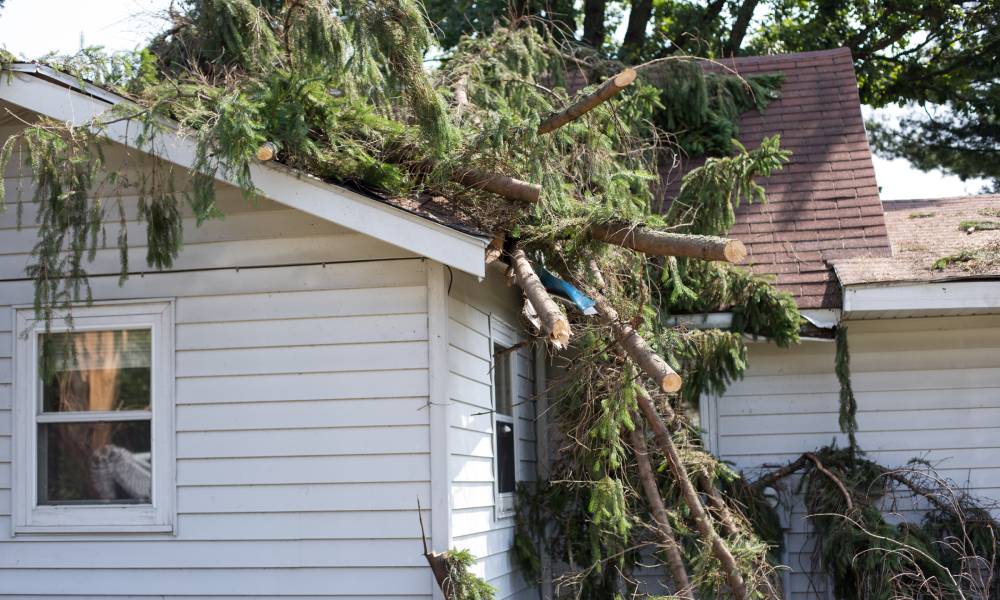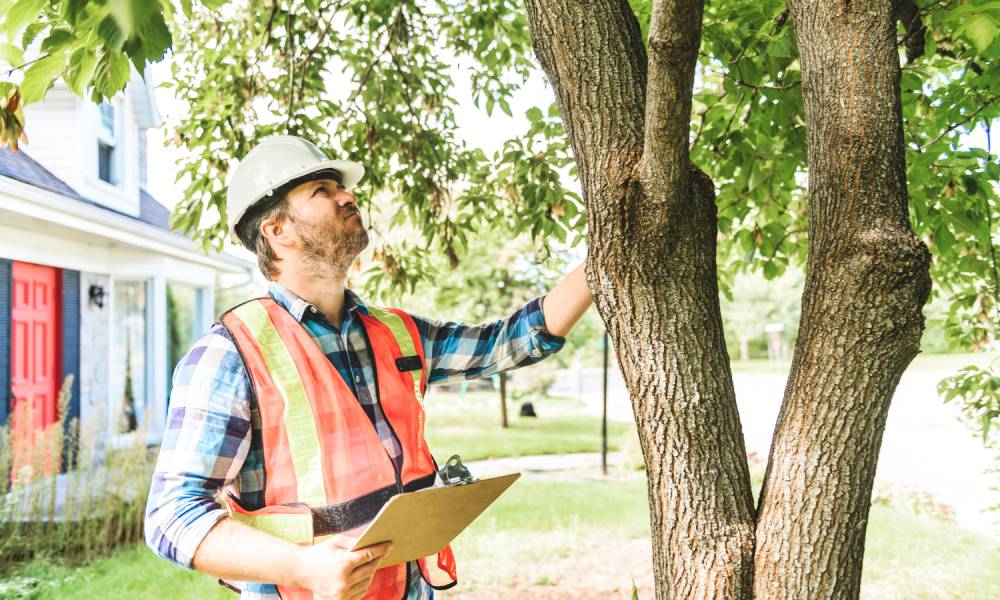Trees provide shade, improve air quality, and increase property value for residential and commercial properties. However, to maintain these benefits, regular tree inspections are essential. We’ll discuss why regular tree inspections are crucial for property owners and how they can protect your property and its occupants.
What Are Tree Inspections?
A professional tree inspection involves a thorough evaluation of the health, stability, and safety of the trees on your property. Certified arborists, trained in tree care and health, typically perform these inspections.
They assess various factors, including the tree’s structure, root health, and signs of disease or pests. Arborists examine the canopy for dead or weakened branches, the trunk for any signs of decay or damage, and the soil to ensure proper root anchorage. They’ll also recommend appropriate measures, such as pruning, treatment for pests or diseases, and sometimes bracing or cabling.
These actions help ensure the trees remain healthy and safe and continue to contribute positively to the landscape’s aesthetics and ecosystem. Regular inspections can also prevent hazards such as falling branches or uprooted trees during storms.
Why Are Tree Inspections Important?
Tree inspections identify issues before they become significant problems. Regular inspections can catch early signs of disease, pest infestations, structural weaknesses, or other hazards that may compromise trees’ health and stability.
By addressing these issues promptly, property owners can prevent costly damage to property, reduce the risk of injury from falling branches, and maintain the overall aesthetic and environmental benefits that trees provide. Below, we detail some specific reasons why regular tree inspections are vital for property owners.
Catches Problems Before They Worsen
One of the primary benefits of regular tree inspections is that they identify potential problems early on, allowing for prompt intervention. Trees can suffer from various issues, such as structural weaknesses, nutrient deficiencies, and exposure to harsh weather conditions. Early detection through regular inspections enables you to address these issues before they worsen, potentially saving your tree and avoiding costly damage to your property.
Detects Early Signs of Diseases or Pests
Trees, like any living organism, are susceptible to diseases and pests. Regular inspections help detect early signs of fungal infections, insect infestations, and other diseases that can compromise a tree’s health.
For example, an arborist can identify symptoms of diseases like Dutch elm disease or pests like emerald ash borer before they spread. Early treatment can prevent disease or pests from causing irreversible damage to the tree and spreading to nearby trees.
Protects Your Property from Damage

If not properly maintained, trees can cause significant damage to property. Overgrown branches can break off during storms, damaging roofs, cars, and other structures. Root systems can disrupt foundations, sidewalks, and driveways.
Regular tree inspections help identify these risks, allowing for timely pruning or other interventions to minimize potential damage. By investing in regular inspections, property owners can maintain the structural integrity of their trees and avoid costly repairs.
Keeps Residents and Customers Safe
For residential property owners, ensuring the safety of family members and guests is paramount. Similarly, commercial property owners must prioritize the safety of their customers and employees. Hazardous trees can pose a significant risk to people, particularly if branches or entire trees fall unexpectedly.
Regular tree inspections help identify and mitigate these risks, ensuring that trees on your property are safe and stable. By keeping residents and customers safe, you also enhance the overall experience and satisfaction of those who visit your property.
Helps Businesses Avoid Legal Trouble
Commercial property owners have a legal obligation to ensure the safety of their premises. Neglecting tree maintenance can lead to accidents, resulting in potential lawsuits and legal troubles. For instance, if a tree branch falls and injures a customer, the business could be held liable for negligence.
Regular tree inspections help prevent such incidents by identifying and addressing hazards before they cause harm. By addressing tree inspections proactively, businesses can avoid costly legal fees and protect their reputation.
How Often To Perform Tree Inspections
The frequency of tree inspections depends on several factors, including the tree’s age, species, and health status. As a general rule, property owners should inspect their trees visually at least once a season. Look for signs of distress, such as dead branches, fungal growth, or visible pest activity.
Professional tree inspections by a certified arborist should be conducted at least once a year. However, trees in high-traffic areas or those showing signs of stress may require more frequent assessments. Seasonal changes, such as the transition from summer to fall or winter to spring, are ideal times for professional inspections. These periods can reveal issues that might not be noticeable during the peak of the season.
Signs that a Tree Inspection is Necessary

Even with regular inspections, there are times when a tree may need immediate attention. Be vigilant for the following signs, which indicate that a professional evaluation is necessary:
- Dead or Dying Branches: Branches that are brittle, leafless, or show signs of decay.
- Fungal Growth: Mushrooms or other fungi growing on or near the tree, indicating internal rot.
- Cracks or Splits: Visible cracks in the trunk or major limbs that compromise the tree’s structural integrity.
- Leaning: Trees that lean significantly, especially if the lean has recently increased.
- Pest Infestation: The presence of insects like beetles, ants, or caterpillars that could damage the tree.
- Root Damage: Exposed, damaged, or decayed roots that can affect the tree’s stability.
- Unusual Leaf Behavior: Leaves that are discolored, wilted, or falling off out of season.
Seasonal considerations are also crucial. For example, heavy snowfall can add weight to branches, increasing the risk of breakage. Strong winds during stormy seasons can also exacerbate structural weaknesses. Regular inspections before and after these seasons can help ensure trees are prepared for and recover from severe weather conditions.
Regular tree inspections are a vital aspect of property maintenance that should not be overlooked. They can catch problems early, detect diseases and pests, protect your property, ensure safety, and prevent legal issues. By understanding the importance of regular tree inspections for property owners, you can ensure the health and longevity of your trees, enhancing the beauty and value of your property.
If you haven’t scheduled a professional tree inspection recently, now is the time. Contact Watts Tree Service for all your tree care needs, including commercial land clearing and regular tree inspections. Our certified arborists are here to help you maintain healthy, beautiful trees that enhance your property and keep it safe for all who enjoy it.
You can ensure that your trees remain a valuable asset to your property while mitigating potential risks. Don’t wait for a problem to arise—be proactive and schedule your tree inspection today!
Last modified: April 25, 2025

